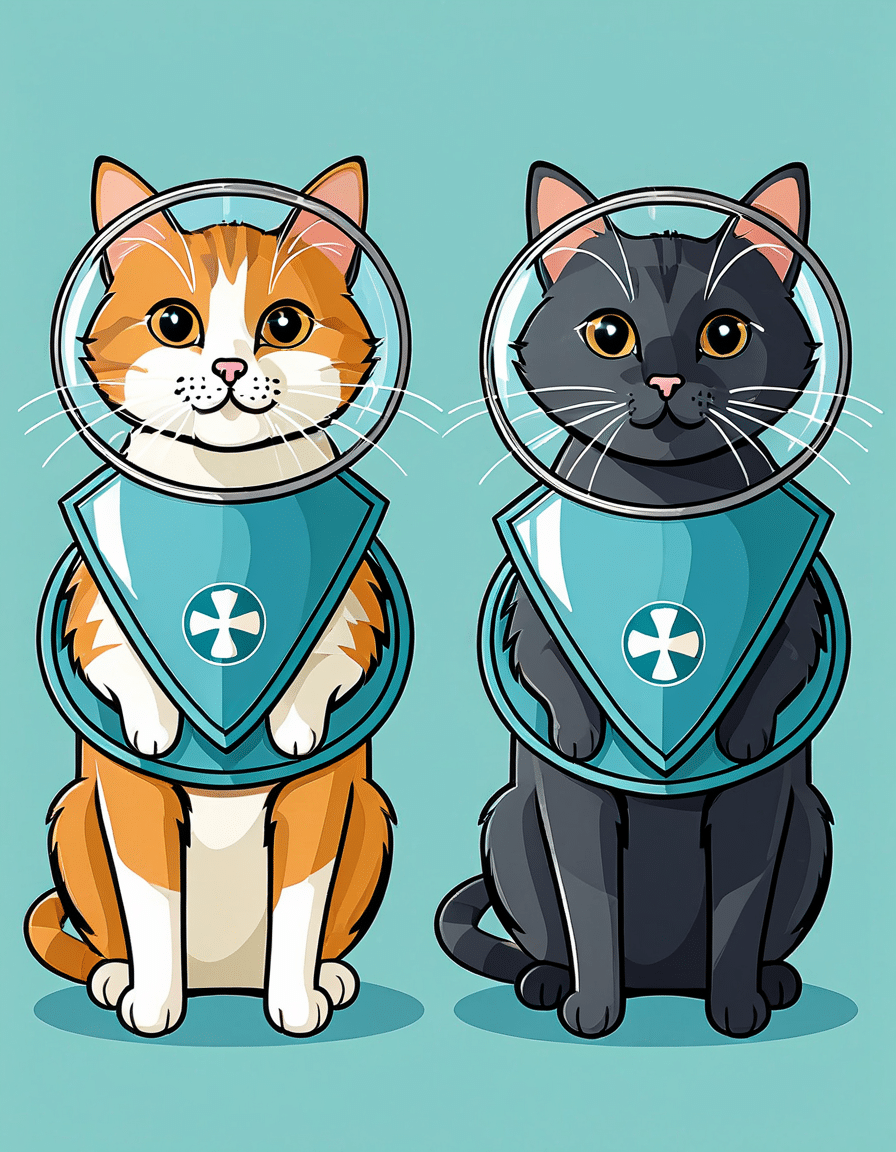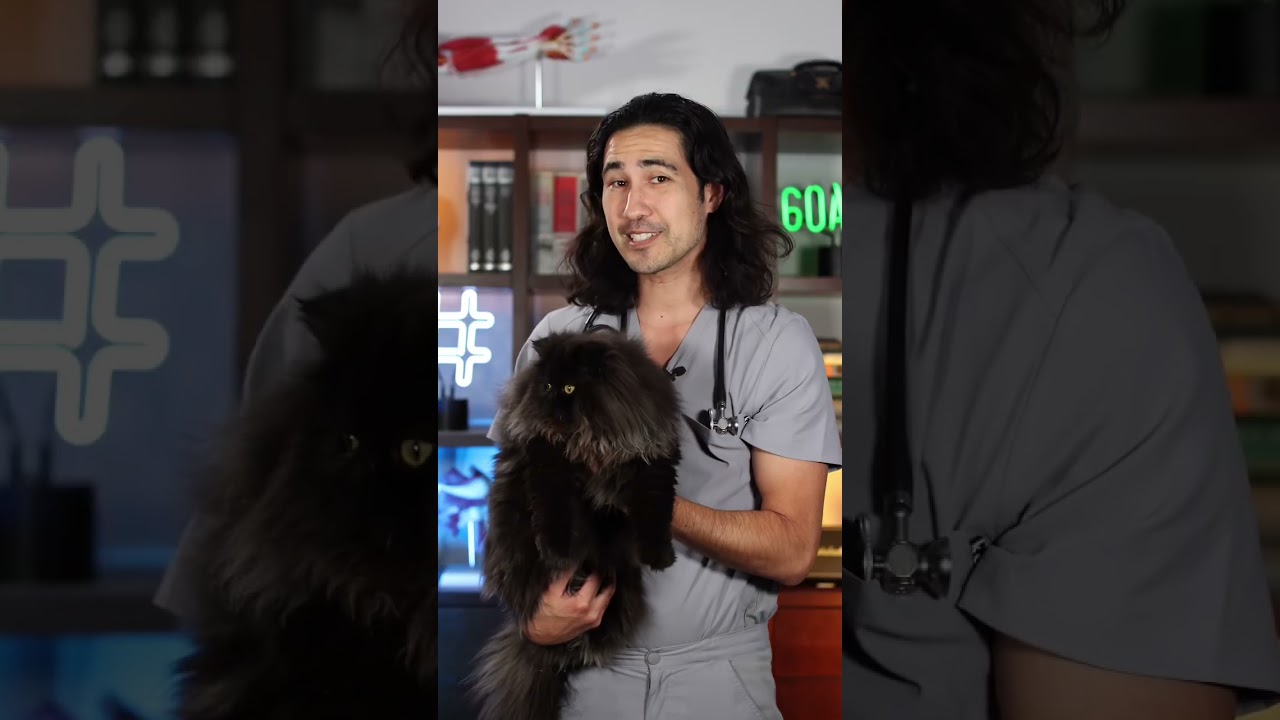Understanding rabies in cats treatment is vital for every cat owner. Rabies is a viral disease that profoundly affects the central nervous system of mammals, including our feline companions. The rabies virus typically spreads through bites from infected animals, making it critical to focus on prevention and timely treatment. While the CDC reports fewer than 300 annual cases in the U.S., rabies remains a pressing concern, especially in areas populated by wildlife.
1. Understanding Rabies in Cats: The Basics of Feline Rabies
Rabies is caused by the rabies virus, which can be harbored by various mammals, such as bats, raccoons, and even domestic dogs. Once a cat is infected, the virus travels through the bloodstream, attacking the central nervous system. Symptoms may take weeks or months to appear, but once they do, it’s a dangerous situation. The scary truth is that once a cat displays clinical signs of rabies, it is almost always fatal.
Preventive measures are the best approach to protect your precious kitty. Vaccinating cats against rabies remains the most effective strategy. Rabies vaccinations for cats are typically administered when kittens reach about 12 weeks of age, with booster shots given according to veterinarians’ recommendations. Understanding rabies in cats treatment starts with understanding how to prevent exposure in the first place.

2. Cats and Rabies: Identifying Symptoms and Behavior Changes
Recognizing the signs that your cat might be infected with rabies is crucial. Behavior changes can happen rapidly and may include:
By being vigilant and identifying these changes, you can seek veterinary help immediately. Remember, rabies is almost always fatal once symptoms are evident.
3. Treatment Protocols for Cats with Rabies: What Owners Should Know
When it comes to treatment for rabies in cats, time is of the essence. Sadly, there is no cure for a cat that shows signs of rabies. Prevention through vaccination is your best bet. If you suspect your cat has been exposed:
Taking these steps can save lives and limit the threat of rabies spreading.

4. Vaccination: The Feline Rabies Vaccine Explained
The feline rabies vaccine is a key aspect of rabies prevention. Here are two commonly used vaccines:
Regular vaccinations are not just legally required in many areas; they’re also the best defense against this life-threatening virus. Pet owners should always keep vaccination records current and consult with their vet about proper scheduling.
5. Understanding Legal Implications and Public Health Concerns
When discussing rabies in cats treatment, it’s important to be aware of the legal implications. Many regions require rabies vaccination in cats, primarily due to public health concerns. For example, numerous U.S. states mandate vaccinations for domestic cats.
Noncompliance poses serious risks, including fines and even mandatory euthanasia for animals exposed to rabies. As responsible pet owners, knowing the laws in your area can help you avoid legal troubles and ensure community safety. This legal framework reflects a communal commitment to health, emphasizing the importance of rabies awareness among everyone involved in pet care.
6. Emerging Research: Future Directions for Rabies Prevention in Cats
The fight against rabies isn’t stagnant; researchers are constantly making strides in veterinary medicine. One exciting area of exploration is the development of more effective vaccines. Studies are underway on DNA vaccines that show promise, potentially eliciting stronger immune responses. This innovation could lead to safer and more effective vaccines in the future.
As scientists work diligently to enhance rabies prevention strategies, our feline friends may see even better protection against this deadly disease in years to come. Keeping abreast of emerging research can empower pet owners and veterinary professionals to make informed decisions.
Innovative Wrap-Up: The Path to a Rabies-Free Future for Cats
With ongoing advancements in research, education, and vaccination, the outlook for rabies prevention in cats is bright. Pet owners hold significant responsibility in minimizing rabies risks by ensuring regular vaccinations and observing any changes in behavior. By staying educated and proactive, we can help protect our beloved feline companions from this preventable but tragic disease.
As we keep pushing for better strategies, let’s aim toward a future where rabies in cats exists only in the history books. Together, we can create safer environments for our pets, ensuring they have long, happy lives at our side.
For more information about pet care and common issues, check out our articles on Subcutis edema or the popular gag cat meme that brings joy to so many cat lovers. If you’re interested in other animal-related facts, you could also explore if Does a chicken pee or the fascinating looks at a muscular doggo.
Keeping our pets safe is always worth the effort. Let’s make it happen!
Rabies in Cats Treatment: Fun Trivia and Interesting Facts
The Basics of Rabies
Did you know that rabies is one of the oldest known diseases? It’s been around for thousands of years and can affect all mammals, including our furry feline friends. When discussing rabies in cats treatment, it’s crucial to grasp the severity of the disease. Once clinical symptoms appear, rabies is almost always fatal. This is one reason why preventive measures, like vaccinations, are essential. Speaking of unique occurrences, think about how the Chancla has become a playful part of many cultures, just like how rabies is an all-too-serious topic! A little humor can help lighten these heavy discussions.
Symptoms and Timeliness
Symptoms of rabies in cats can start showing two weeks after exposure, which can be alarming. You might notice behavioral changes, vocalizations, or even aggressive tendencies. While knowledge may seem like overwhelming information at times—kind of like the intricate layers of Terroir that define the flavors of wine—you can arm yourself with the right insights. Recognizing early signs can be a game-changer when it comes to effective rabies in cats treatment. If you find yourself in an unexpected situation, like during sports events resembling El Salvador Vs Inter Miami, stay calm and take action quickly. Don’t hesitate to contact your vet immediately.
Prevention is Key
Preventing rabies through vaccination is paramount and cost-effective, so keep that in mind during your planning. Fun fact: did you know that rabies is preventable if the infected person receives prompt medical treatment? It’s a bit like how mortgage rates forecast can be surprising but manageable with the right planning. Regular check-ups and vaccinations will help you minimize the risk. Consider also the role of education and awareness; by staying informed, you can improve your knowledge surrounding not just rabies but overall pet care.
In summary, while rabies in cats treatment is undoubtedly a serious topic, it can be broken down into manageable pieces. Recognizing symptoms early, maintaining vaccination schedules, and acting swiftly can lead to better outcomes for your beloved pet. Who wouldn’t want to keep their feline safe from such a preventable disease? And remember, just like Stanislav Ianevski brought depth to his roles in films, you can bring crucial knowledge to your responsibilities as a pet owner!






